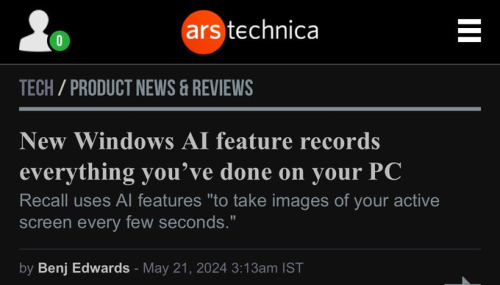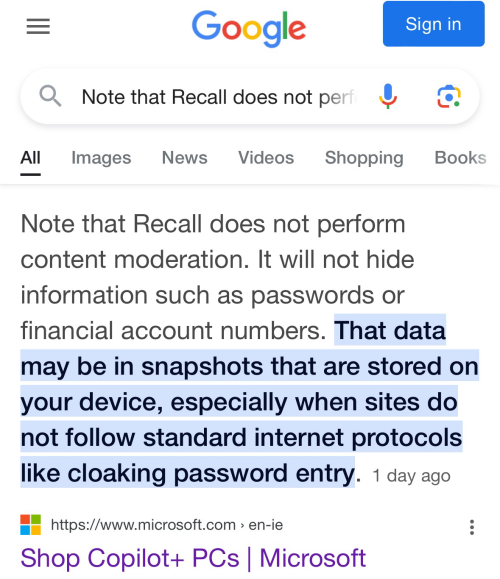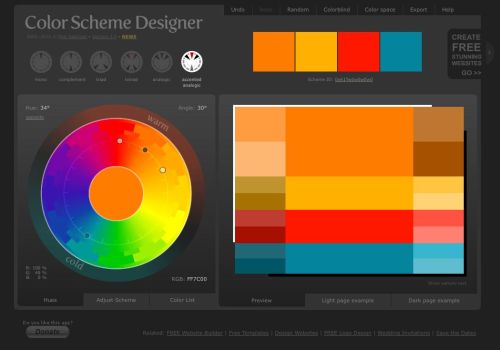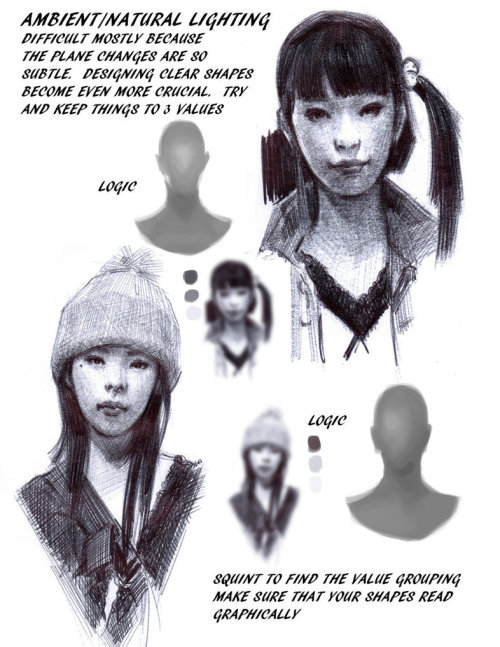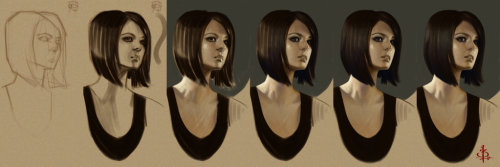Useful - Blog Posts
AI disturbance overlays for those who don't have Ibis paint premium. found them on tiktok
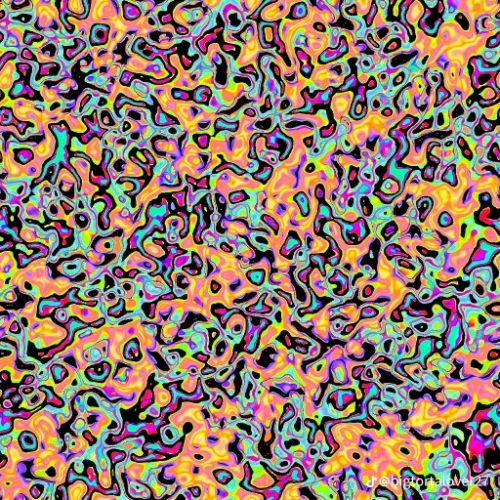
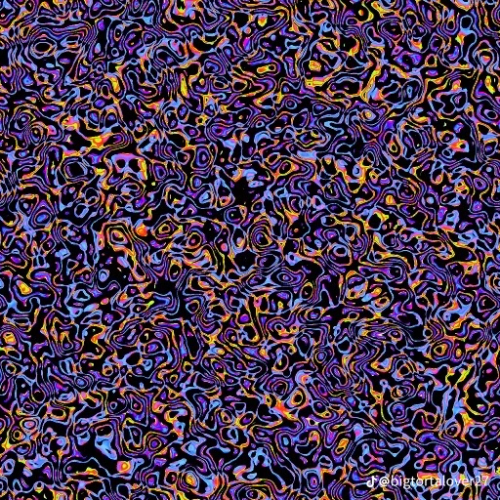
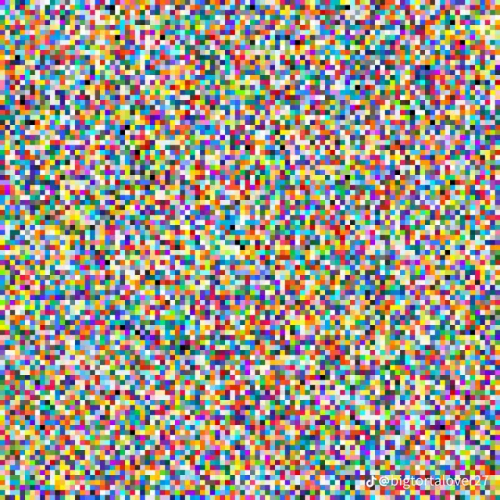

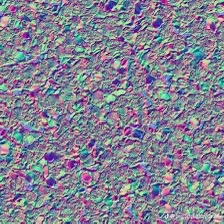
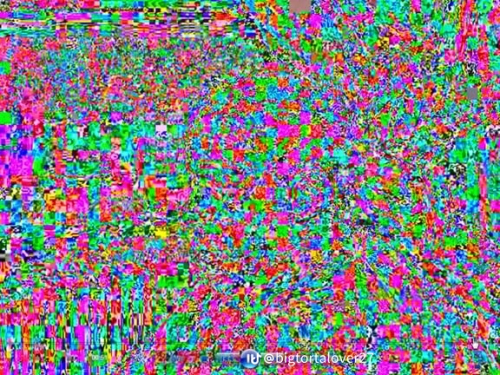
i dont consider myself a 'fashion guru' by any means but one thing i will say is guys you dont need to know the specific brand an item you like is - you need to know what the item is called. very rarely does a brand matter, but knowing that pair of pants is called 'cargo' vs 'boot cut' or the names of dress styles is going to help you find clothes you like WAAAYYYY faster than brand shopping
hot artists don't gatekeep
I've been resource gathering for YEARS so now I am going to share my dragons hoard
Floorplanner. Design and furnish a house for you to use for having a consistent background in your comic or anything! Free, you need an account, easy to use, and you can save multiple houses.
Comparing Heights. Input the heights of characters to see what the different is between them. Great for keeping consistency. Free.
Magma. Draw online with friends in real time. Great for practice or hanging out. Free, paid plan available, account preferred.
Smithsonian Open Access. Loads of free images. Free.
SketchDaily. Lots of pose references, massive library, is set on a timer so you can practice quick figure drawing. Free.
SculptGL. A sculpting tool which I am yet to master, but you should be able to make whatever 3d object you like with it. free.
Pexels. Free stock images. And the search engine is actually pretty good at pulling up what you want.
Figurosity. Great pose references, diverse body types, lots of "how to draw" videos directly on the site, the models are 3d and you can rotate the angle, but you can't make custom poses or edit body proportions. Free, account option, paid plans available.
Line of Action. More drawing references, this one also has a focus on expressions, hands/feet, animals, landscapes. Free.
Animal Photo. You pose a 3d skull model and select an animal species, and they give you a bunch of photo references for that animal at that angle. Super handy. Free.
Height Weight Chart. You ever see an OC listed as having a certain weight but then they look Wildly different than the number suggests? Well here's a site to avoid that! It shows real people at different weights and heights to give you a better idea of what these abstract numbers all look like. Free to use.
So many beautiful colours, identities, and sexualities!🌈🌈🏳️🌈🏳️🌈
Hex Codes for LGBTQ+ Flags

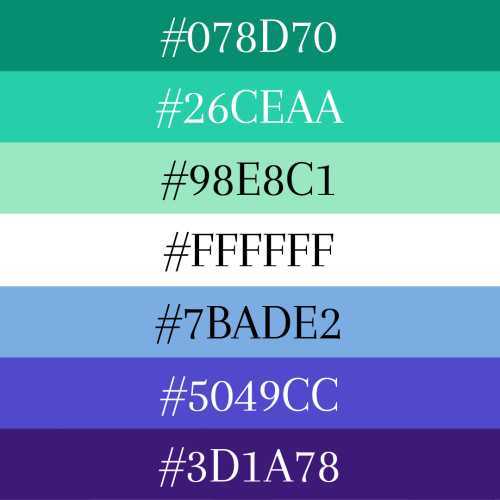







for all my artists, content creators, and anyone else out there who use specific color palettes for references/designs, here are the hex codes for each of the lgbtq flags for your queer creative purposes. i hope you find these useful. enjoy!
How to show emotions
Part VIII
How to show helplessness
slightly open mouth
downturned mouth
eyes slightly more open
being hesitant in their movements
shrugging shoulders
wringing their hands
crossed arms to protect themself
buckling of the legs, becoming instable
speaking softly and shaky
How to show optimism
openly smiling
relaxed face
bright, attentice eyes
steady and natural eye contact
open and upright posture
energetic and animated movements
speaking in an upbeat and positive tone
walking with a spring in their step
walking confidently
How to show anticipation
bright and open eyes
looking around
sweaty palms
trembling hands
heart racing
fidgeting with their entire body
crossing and uncrossing one's legs
having restless legs, rocking them
drumming with their fingers
bouncing on one's toes
shifting from one foot to the other
pacing around
fussing with clothes
How to show amusement
eyes twinkling with mirth
chuckling
bursting out in laughter
eye contact to share their amusement
being open and relaxed
a genuine smile
raised eyebrows
crinkling around the eyes
tilting of the head
slapping their thigh
playfully nudging other characters
How to show respectfulness
standing tall with good posture
maintain steady, appropriate eye contact
avoiding direct staring to not make them feel uncomfortable
speaking in a calm and measured tone
showing attentiveness by listening actively
using polite language and manners, not interrupting or talking over anyone
no crossing of arms and relaxed hands
More: How to write emotions Masterpost
If you like my blog and want to support me, you can buy me a coffee or become a member! And check out my Instagram! 🥰
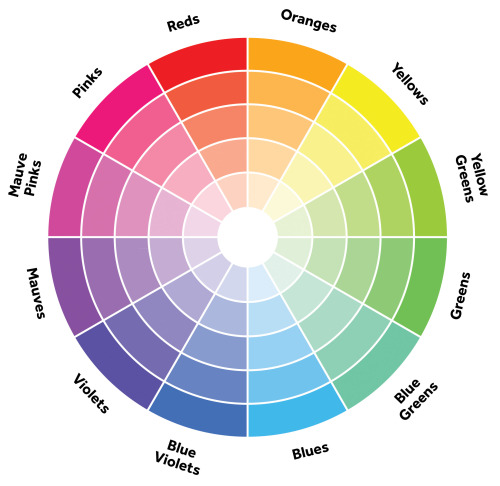
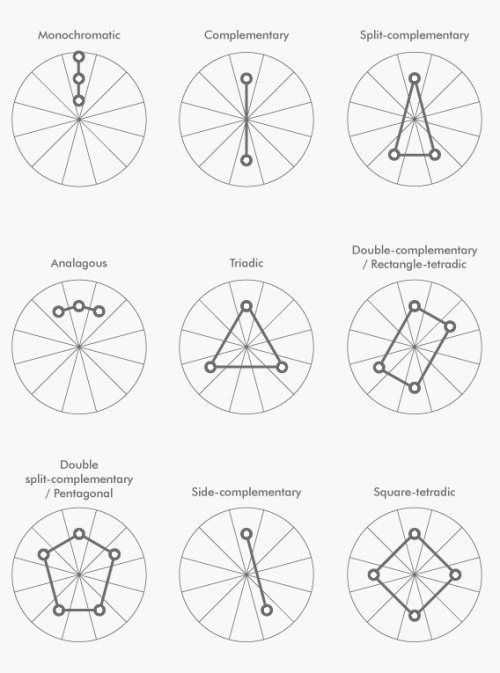
A simple guide to picking a great color palette. No matter what the colors are, using colors that are certain distances from each other on the color wheel result in a great contrast of colors. The simple color schemes shown above are used in the most popular logos, posters, websites, paintings, and even movies and television.
Watch "10 Smart Gadgets On Amazon 2022 | Smart Gadgets On Amazon 2022" on YouTube
How To Foreshadow

Foreshadowing is a necessary part of any well-executed story. And yet, despite all its prevalence and importance, it’s actually a concept that many authors have a hard time getting their minds around. If we sift foreshadowing down to its simplest form, we could say that it prepares readers for what will happen later in the story.
At first glance, this may seem counter-intuitive. Why would we want readers to know what’s going to happen later in the story? If they know how the book turns out, they’ll have no reason to read on.
True enough. So let me reiterate. The point of foreshadowing is to prepare readers for what happens later in the story. Not tell them,just prepare them.
Foreshadowing’s great strength lies in its ability to create a cohesive and plausible story. If readers understand that it’s possible that someone in your story may be murdered, they won’t be completely shocked when the sidekick gets axed down the road. If, however, you failed to properly foreshadow this unhappy event,readers would be jarred. They would feel you had cheated them out of the story they thought they were reading. They would think you had, in essence, lied to them so you could trick them with this big shocker.
Readers don’t like to be cheated, lied to, or tricked. And that’s where foreshadowing comes into play.
Foreshadowing, Part 1: The Plant
We can break foreshadowing down into two parts. The first is the plant. This is the part where you hint to readers that something surprising and/or important is going to happen later in the book. If the bad guy is going to kidnap the good guy’s son, your plant might be the moment when your hero notices a creepy dude hanging around the playground. If your heroine is going to be left standing at the altar, your plant might be her fiancé’s ambivalence toward the wedding preparations.
Depending on what you’re foreshadowing, the plant can be blatant or subtle. Subtle is almost always better, since you don’t want to giveaway your plot twists. But, at the same time, your hints have to be obvious enough that readers will remember them later on.
Usually, the earlier you can foreshadow an event, the stronger and more cohesive an effect you will create. The bigger the event, the more important it is to foreshadow it early. As editor Jeff Gerke puts it in The First 50 Pages:
Basically, you need to let us in on the rules. If the climax of your book is going to consist of getting into a time machine and jumping away to safety, we had better have known in the first fifty pages that time travel is possible in the world of your story.
Foreshadowing, Part 2: The Payoff
Once you’ve got your plant in place, all that’s left is to bringthe payoff on stage. If you planted hints about kidnapping, jilting, or time travelling, this is the part where you now get to let these important scenes play out.
As long as you’ve done your job right with the plant, you probably won’t even need to reference your hints from earlier. In fact, you’re likely to create a more solid effect by letting readers put the pieces together themselves.
But you’ll also find moments, usually of smaller events that were given less obvious plants, that will benefit from a quick reference to the original hint (e.g., “George,you big meanie! Now I understand why you wouldn’t choose between the scarlet and the crimson for the bridesmaids’ dresses!”)The most important thing to remember about the payoff is that it always needs to happen. If you plant hints, pay them off. Just as readers will be confused by an unforeshadowed plot twist, they’ll also be frustrated by foreshadowing that excites them and then leads nowhere.
Foreshadowing vs. Telegraphing
The trick to good foreshadowing is preparing your readers on a subconscious level for what’s coming without allowing them to guess the ins and outs of the plot twist. You don’t want your hints to be so obvious that they remove all suspense. In her October 2012 Writer’s Digest article “Making the Ordinary Menacing: 5 Ways,” Hallie Ephron calls this “telegraphing”:
When you insert a hint of what’s to come, look at it critically and decide whether it’s something the reader will glide right by but remember later with an Aha!That’s foreshadowing. If instead the reader groans and guesses what’s coming, you’v etelegraphed.
Some clever readers will undoubtedly be able to interpret your hints, no matter how cagey you are. But if you can fool most of the readers most of the time, you can’t ask for more than that.
Foreshadowing vs. Foreboding
Foreboding—that skin-prickling feeling that somethinghorrible is going to happen—can be a useful facet of foreshadowing. By itself, foreboding isn’t specific enough tobe foreshadowing. Unlike the plants used for foreshadowing, foreboding is just an ambiguous aura of suspense. Jordan E. Rosenfeld describes it in Make a Scene:
[F]oreshadowing … hints at actual plot events to come, [but]foreboding is purely about mood-setting. It heightens the feeling of tension in a scene but doesn’t necessarily indicate that something bad really will happen.
Foreboding is useful in setting readers’ emotions on edge without giving them any blatant hints. But when it comes time to foreshadow important events, always back up your foreboding by planting some specific clues.Most authors have so intrinsic an understanding of foreshadowing that they plant it and pay it off without even fully realizing that’s what they’re doing. But the better you understand the technique, the better you can wield it. Using this basic approach to foreshadowing, you can strengthen your story and your readers’ experience of it.
Source x
Author Scott Lynch responds to a critic of the character Zamira Drakasha, a black woman pirate in his fantasy book Red Seas Under Red Skies, the second novel of the Gentleman Bastard series.
The bolded sections represent quotes from the criticism he received. All the z-snaps are in order.
Your characters are unrealistic stereotpyes of political correctness. Is it really necessary for the sake of popular sensibilities to have in a fantasy what we have in the real world? I read fantasy to get away from politically correct cliches.
God, yes! If there’s one thing fantasy is just crawling with these days it’s widowed black middle-aged pirate moms. Real sea pirates could not be controlled by women, they were vicous rapits and murderers and I am sorry to say it was a man’s world. It is unrealistic wish fulfilment for you and your readers to have so many female pirates, especially if you want to be politically correct about it! First, I will pretend that your last sentence makes sense because it will save us all time. Second, now you’re pissing me off. You know what? Yeah, Zamira Drakasha, middle-aged pirate mother of two, is a wish-fulfillment fantasy. I realized this as she was evolving on the page, and you know what? I fucking embrace it. Why shouldn’t middle-aged mothers get a wish-fulfillment character, you sad little bigot? Everyone else does. H.L. Mencken once wrote that “Every normal man must be tempted at times to spit on his hands, hoist the black flag, and begin slitting throats.” I can’t think of anyone to whom that applies more than my own mom, and the mothers on my friends list, with the incredible demands on time and spirit they face in their efforts to raise their kids, preserve their families, and save their own identity/sanity into the bargain. Shit yes, Zamira Drakasha, leaping across the gap between burning ships with twin sabers in hand to kick in some fucking heads and sail off into the sunset with her toddlers in her arms and a hold full of plundered goods, is a wish-fulfillment fantasy from hell. I offer her up on a silver platter with a fucking bow on top; I hope she amuses and delights. In my fictional world, opportunities for butt-kicking do not cease merely because one isn’t a beautiful teenager or a muscle-wrapped font of testosterone. In my fictional universe, the main characters are a fat ugly guy and a skinny forgettable guy, with a supporting cast that includes “SBF, 41, nonsmoker, 2 children, buccaneer of no fixed abode, seeks unescorted merchant for light boarding, heavy plunder.” You don’t like it? Don’t buy my books. Get your own fictional universe. Your cabbage-water vision of worldbuilding bores me to tears. As for the “man’s world” thing, religious sentiments and gender prejudices flow differently in this fictional world. Women are regarded as luckier, better sailors than men. It’s regarded as folly for a ship to put to sea without at least one female officer; there are several all-female naval military traditions dating back centuries, and Drakasha comes from one of them. As for claims to “realism,” your complaint is of a kind with those from bigoted hand-wringers who whine that women can’t possibly fly combat aircraft, command naval vessels, serve in infantry actions, work as firefighters, police officers, etc. despite the fact that they do all of those things– and are, for a certainty, doing them all somewhere at this very minute. Tell me that a fit fortyish woman with 25+ years of experience at sea and several decades of live bladefighting practice under her belt isn’t a threat when she runs across the deck toward you, and I’ll tell you something in return– you’re gonna die of stab wounds. What you’re really complaining about isn’t the fact that my fiction violates some objective “reality,” but rather that it impinges upon your sad, dull little conception of how the world works. I’m not beholden to the confirmation of your prejudices; to be perfectly frank, the prospect of confining the female characters in my story to placid, helpless secondary places in the narrative is so goddamn boring that I would rather not write at all. I’m not writing history, I’m writing speculative fiction. Nobody’s going to force you to buy it. Conversely, you’re cracked if you think you can persuade me not to write about what amuses and excites me in deference to your vision, because your vision fucking sucks. I do not expect to change your mind but i hope that you will at least consider that I and others will not be buying your work because of these issues. I have been reading science fiction and fantasy for years and i know that I speak for a great many people. I hope you might stop to think about the sales you will lose because you want to bring your political corectness and foul language into fantasy. if we wanted those things we could go to the movies. Think about this! Thank you for your sentiments. I offer you in exchange this engraved invitation to go piss up a hill, suitable for framing.
Creating plots with the zigzag method
I’ve learned this method years ago and I’ve been using it ever since. The zigzag plot creator starts like this:

An crescent zigzag.
You can have as many up and downs as you want. I’ve drawn six to keep it simple. Alright, this zigzag is your storyline and every corner is an important event that will change everything:

Every down represents a bad thing happening to your main characters, taking them further away from their goal. Every up is a good event, taking them closer to their goal:

So, when the zigzag goes down, something bad must happen. When the zigzag goes up, something good must happen. The reason why we drew a crescent zigzag is because every down must be worse than the previous, and every up must be better than the previous. As the zigzag advances, events become more serious and relevant.

Let’s apply the zigzag method. My storyline is a detective trying to catch a serial killer in a futuristic city. Minutes later, this is what I’ve got:

Start: Detective, our protagonist, is just promoted
Down #1: Mass suicide happens in town, detective gets the case, the whole town thinks it might have been a religious suicide act, but detective suspects that someone single-handed killed all those people
Up #1: Detective finds clue about a possible killer
Down #2: A bigger mass murder happens, a true massacre, it’s a definitely a murder
Up #2: Detective finds the killer’s trail
Down #3: Thinking he is ahead of time, close to catching the killer, detective ends up dead in another mass murder
Up #3: Because of his notes and discoveries, the police is able to find the killer before they leave town
From this point on you can play with zigzag as much as you want. For example, changing the orientation of the zigzag for a bad ending:

Lots of ups and downs:

Or just a few:

It’s up to you (see what I did there?).
You can plot any type of story with the zigzag method. It’s a visual and easy process for a very complex task.
I wish I knew how to outline stories. I’ve tried so many times but I never get it.
I need an outlining coach or tutor or some shit. Someone who will sit me down, talk over what’s supposed to happen with me, and walk me through the process of outlining.
Because this fic is plot heavy and I’m a total pantser and I’m gonna screw it up or hit a writers’ block of the “uh…what’s supposed to happen now?” variety if I don’t get my shit together.
imagine if the oceans were replaced by forests and if you went into the forest the trees would get taller the deeper you went and there’d be thousands of undiscovered species and you could effectively walk across the ocean but the deeper you went, the darker it would be and the animals would get progressively scarier and more dangerous and instead of whales there’d be giant deer and just wow
Hello! I have a plan to get my main character injured by the antagonist. But, since the mc lives, is it better to describe the danger or get the mc injured so he (and the audience) would have no questions about the seriousness of the antagonist?
When to Injure Your MC
If you ask many writers why they beat their characters up so much, the immediate playful answer might be “Because it’s fun!” but there is (or should be) some strategy involved in when and how you injure your main character. So before I answer the question directly, I’m going to discuss these strategies a little.
Reasons to Injure a Character:
1. To create additional challenges in a high-stakes situation
If a character’s journey has been fairly easy to far, an injury is one way to complicate things. But the only way it works is if the injury lasts long enough to really hinder them.
For instance, if you have a character that has the magical ability to heal others, then a character being injured and then healed two minutes later doesn’t create much of a challenge, nor does it heighten suspense since the character’s life was never truly in danger. So an injury that’s introduced to complicate things should take some time to recover from, and it’s usually more realistic anyway, especially when you consider the tortuous stuff we do to our MCs sometimes.
However, if you do have a healer character, and they’re currently separated from the character you injure, then a challenge is immediately presented. The injured character has to continue their journey through the injury, to either reach their destination or be reunited with the healer that can help them.
2. To foreshadow a future situation
The situation I described above, where a character is injured and then healed two minutes later, could work, if it’s being used to foreshadow the second situation I described, where the two characters are separated. Showing the healer in action early in the story can foreshadow a later complication when the healer is unable to assist their companion, whether it’s due to a separation or a sudden loss of powers.
It can also work as exposition to show the way the healer’s power works.
3. To show the antagonist’s maliciousness
The anon above suggested they injure their character to show the antagonist means business, and that definitely qualifies as a good reason to injure a character.

See, when an antagonist hurts a character - and not just an MC, but anyone - they show that they don’t care who gets in their way. They want what they want, and in their opinion, the ends justifies the means. Even when a character isn’t necessarily in their way, and they do it for pleasure, it tells a reader a great deal about the antagonist’s psyche, and how far they’ll go to further their own agenda.
My only caution here is to be wary of how often you’re using this reason. Often times it becomes easy to justify an antagonist’s plan by saying “They’re evil and they enjoy torturing people.” But villains who are evil just for the pure enjoyment of it grow uninteresting and predictable quickly. So despite the pleasure they get out of hurting people, they must have some greater scheme in front of them. Some ultimate gain that they’re hoping to achieve. A combination of these two things can breed a fascinating antagonist.
4. To deepen a character bond or relationship
Injuries or illness are great opportunities to write a dynamic where one character is taking care of another, showing how close the two characters are, and how attentively they’ll care for the other. But this dynamic is most compelling when it’s a reversal, such as a little brother taking care of an older one, or when someone who the protagonist has built up to be invincible is suddenly sidelined and needs the protagonist’s help.
Like the previous reason, i would just be careful how frequently this occurs. Situations like these are more effective when they’re big, and they last long term, rather than several smaller instances where a character keeps getting hurt and cared for.
There may be other reasons out there to justify injuring a character that I haven’t thought of here, but I can surely tell you one reason not to:
Avoid injuring a character purely for the fun of it.
Now listen, what you do in your own private writing universe is your own business, and if you want to put your characters through hell because it’s fun, I commend you for finding so much joy in the process of writing and I encourage you to keep at it. But when it comes to finding an audience, and telling a cohesive, well-paced, well-plotted story, you gotta start considering each move you make as a writer, and ask yourself if each plot point needs to be there.
Back to the anon…
Now that I’ve gone into all this detail, let me get back to the specific question that the anon asked. Since the character ultimately lives, is it better to just show the possible danger, or to actually have the antagonist injure them to show they’re serious?
My answer to you would be that you could injure the character, since your reasoning falls within the reasons I listed here (reason #3), and it would be even better if it qualified for two reasons, such as delaying their progress to achieve their goal (reason #1) or repairing a strained relationship when a companion must take care of them (reason #4).
Your argument that the character lives (so why bother?) ignores the need for conflict in a story. Readers appreciate conflict, as long as there are logical reasons for it, and if you consider these reasons I discussed, you should be in great shape.
However, I think that you could show your antagonist’s malicious intentions without injuring the character, if you felt the injury would be too much for an already conflict-heavy plot. The antagonist might show anger/violence towards the people working for them (out of frustration), or even to innocent bystanders, or other minor characters whose fates we’re not as tied up in. So I think there are still options for you if you wanted to avoid an injury.
-Rebekah

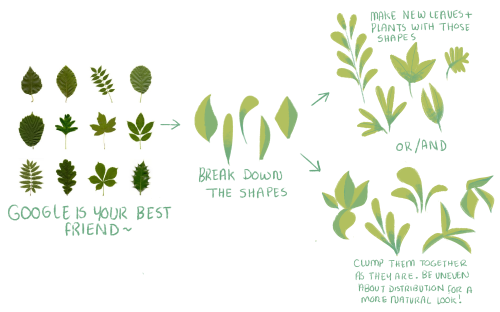

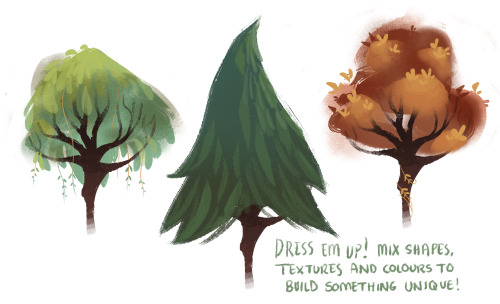

A couple people asked me how I vary my leaves and trees and honestly, it’s super easy! I’ve never made a tutorial/guide before so I kept this mega simple but I hope someone out there might find it useful at least!
Also, anyone can download the brushes I use for all my art on my tumblr page (: I only use around 5 so go nuts haha










ive never really made a tutorial before but i thought i’d try!
all my portrait paintings are done on a 2000-3000 pixel canvas with 300 dpi using the two brushes shown above with varying opacity
(note: a flat steak brush texture can be found in many basic deviantart paint tool sai brush downloads! don’t worry if it’s not the exact one im using, i have several from different sources and they all generally do the same thing with the right settings)



Exercise 49 Results: Leatherworking Step by Step
Artist: Tim Von Rueden (vonn)
Check out the Exercise and Download the Practice Sheet HERE.
When it comes to fantasy concept and illustration work, you would be hard pressed not to include leather of some kind. We see it everywhere in video games, movies, and shows. I believe this material is essential to understand if you want to work in the industry. I personally love working with leather as it’s a textured surface that either has little to no shine, or a pretty defined highlight. You can carve into it to add designs or you can give it seams and stitching to add that extra detail. Learn to love this material as you may be having to create it a substantial amount of time!
stuff i’ve learned about writing after 10 weeks in an MFA program
so as some of you might know, i’m currently going to grad school for writing fiction and creative nonfiction. it’s a well-respected program, fully funded, with fantastic faculty and excellent classes. i’m learning a lot, so i thought even though i’m only just getting started (it’s a 2-year program), i’d share some stuff i’ve learned.
all writing is valid. scribbling a poem onto a cocktail napkin at an awkward family function is just as worthy of careful literary analysis as Faulkner. i’ve read stories and thought this is the worst thing i’ve ever read, i can’t take this seriously and then watched as established, widely published authors and academics provided a thoughtful and thorough criticism of it. treat all writing with respect, your own included.
all research is valid. i went on a rant about BDSM politics in queer culture, and this boy, who looked totally bewildered, asked me what BDSM was. after (hopefully) tactfully explaining it to him, he asked me, “so is that like…your research or something?” to which i replied, “…you could say that.” what i mean is, anything you are curious about is worthy of your attention and curiosity. anything you want to learn is worth learning. there is no such thing as a guilty pleasure when it comes to education.
good writing is a facet of place. the reason i think we believe our writing and research isn’t valid is because we are writing and researching in spaces that are not conducive to our interests. and when we see ourselves not yielding to those which we compare ourselves, it’s easy to think we’re “bad writers.” the key is to find places (publications, platforms, people, etc) that match your aesthetic, somewhere that your work might belong.
think of it this way: if you go to a function filled with foodies in formal wear talking about their yachts, you’re not going to bring celery sticks with peanut butter and raisins. that doesn’t mean ants on a log are a bad snack, but that this party is the wrong place for it. you bring that snack to a kid’s birthday party where you’ll probably have more fun anyway, and suddenly you’re a five-star chef.
don’t conform. take risks. this is something my workshop leader told me when i was concerned about workshopping my novella, and i told her i wanted to “tone it down.” i have gathered that the people who are considered experts in the field of writing are generally all looking for two things in any given work: creativity and whether or not the piece is doing something. (i’ll comment on the latter in the next point.) creativity is about being weird, about making things that don’t exist yet, using your knowledge of the world and filling in all the gaps with your own design. creativity is not about conforming to anyone else’s standards or expectations.
write to “do something” or create a conversation. admittedly i’m pretty accustomed to writing for the sake of self indulgence, which is great for inspiring first drafts but terrible for everything else. i’ve read works where the purpose of them was the complete romanticization or commentary of the self, and while that’s fine for people who already possess considerable ethos (re: celebrities), for people without it, these works aren’t adding to any conversation on any topic besides that writer’s introspection. (note, this is not “bad writing”; it just has a different place, generally a private journal.)
in the world of fanfic, we are all inherently adding to the conversation of a given canon. without that foundation, in the literary world your canon has to become something else: stories about big picture concepts like grief or oppression; stories subverting a popular generalization; stories that give new light to something. genre is thus not about conformity, but having a creative conversation with people who are interested in the same things you are. writing is about inserting yourself into the dialogue, adding to the lexicon of something greater than yourself.
where this breaks down, however, is the idea that some big picture topics are “overdone” such that they become tropes or cliches. tropes and cliches are indications of conformity. without a cohesive knowledge of your genre or interest to know which gaps need filled, it’s easy to fall into these traps of commonality.
positive and summative feedback is more helpful than negative feedback. a lot of people will disagree with me on this, but generally negative feedback is an indication that you didn’t understand the writers’ vision, and are superimposing your own vision over theirs. most people (in my community anyway) transform their negative criticism into questions for the writer to consider, or point out “what isn’t working.”
that said, the idea of summarizing what you just read is incredibly helpful, because it offers the writer insight into the things you picked up and stuck with you. it aligns the writers’ intentions with the reader’s perceptions to see if a story is working the way it should. this supposes, however, that you have an intention to your story, see: the “do something” point.
and mostly, positive criticism is the literal best. not only does it make writers happy, it encourages them to improve and points out the things they’re doing right so they can polish up what works and sweep away what doesn’t. never be afraid to offer compliments, and if something affected you personally or moved you, let the writer know. the best feedback i’ve given is when i point-blank told the writer, “this piece meant a lot to me, and here’s why.”
write about writing. this is a whole school of thought that i haven’t had time to delve into research-wise, but it’s something i make my students do, and it’s something i’m doing right now just by writing this. reflecting about writing solidifies concepts that you’ve learned so that they become easier to implement in future works. so when you’re done with a piece, write yourself a feedback letter about what you wrote, what you thought worked, and what you can improve for next time. if it’s a fic, maybe this could go in a blog post or an author’s note, or maybe you can just keep it for yourself in a journal. but thinking about writing and writing about writing is an enormously effective tool in development.
i hope this helps someone somewhere. even if it doesn’t, i think this is a good platform for reflection. you can read my other writing advice in my writing advice tag, or see a curation of my advice in my masterpost.


Story Lines
This comic was inspired by Kurt Vonnegut’s classic lecture about the shapes of stories. It appears in the most recent issue of The Southampton Review.
Posters are available at my shop.
QUICK
FREE ART PROGRAMS I USE AND RECOMMEND
MEDIBANG PAINT PRO
FIREALPACA (the lightweight version of the above and really good for a slow computer)
GIMP (I use this primarily for editing purposes not drawing).
KRITA
WHERE I GET MY SUPPLIES:
JETPENS Check it out!!!
Jerry’s Artarama
Dick Blick
REFERENCE FOR DRAWING PRACTICE
jademacalla
null-entity
senshistock
posemaniacs
DIGITAL ART STUFF
Palette Generator

Color Blender

CHARACTER DESIGN STUFF?
Comparing Heights
Body Visualizer
Other Important Survival Skills & Information
For whatever reason you’re here, knowing survival skills can save your life or your character’s life (especially for those writers out there that are researching this topic).
Basic Rules If You Are Lost And Alone In The Wilderness
Basic Wilderness Survival Skills
Celestial Navigation & Land Navigation - Navigation without a Compass
Finding True North Without a Compass
Telling Time Without A Clock: Scandinavian Daymarks
Wilderness Survival - Field-Expedient Direction Finding
Wilderness Survival - Contact With People
Wilderness Survival - Clouds: Foretellers Of Weather
Wilderness Survival - Camouflage
Wilderness Survival - Sea Survival
Wilderness Survival - Cold Weather Survival
Wilderness Survival - Tropical Survival
Wilderness Survival - Desert Survival
Wilderness Survival - Field-Expedient Weapons, Tools, And Equipment
Wilderness Survival - Psychology of Survival
Wilderness Survival - Signaling Techniques
Morse Code
The Survivalist - Survival Gear: Make Your Own Signal Whistle
The Survivalist - Survival Skills: Signal Whistle Codes
The Survivalist - Survival Gear: How To Make A Compass
The Survivalist - Survival Skills: Folk Wisdom Weather Predictors
The Survivalist - How To Make Rope From Natural Fibers
The Survivalist - Tying Knots That Work
The Survivalist - More Knots That Work
The Survivalist - How To Make Your Own Tick And Bug Repellent
The Survivalist - How To Make A Toothbrush In The Field
The Survivalist - Insulate You Clothes To Survive The Cold
The Survivalist - Survival Skills: Find Natural Toilet Paper
Going To The Bathroom In The Woods 101
How To Go In The Woods
Plants That Repel Mosquitoes
One Green Planet - DIY Natural Insect Repellent
Preventing Bug Bites In The Woods
Homemade Natural Bug Spray Recipes
Bushcraft Camp Hygiene
Wilderness Hygiene
Preparing For Your First Year Trip — Wilderness Living
Camping and Cramping: How To Handle Your Period While You Enjoy The Great Outdoors
Hiking While Menstruating?
What Did Women Use For Menstruation In Europe and America From 1700 - 1900, And Probably Earlier?
Menstruation, Menstrual Hygiene and Woman’s Health in Ancient Egypt
Survival: Animal Attacks
How to Survive Wild Animal Attacks




Resource: Map-Making Brushes/Icons
Here’s another resource courtesy of my D&D campaign planning! I decided to put together some Photoshop brushes to make map creation easier, since I have a crapton of maps to make. The above example is still a somewhat rough work in progress, but it gives you a decent idea of what you can do with the brushes. Once I had the outline drawn, it only took about ten minutes to fill in most of the geography and other details (naming things admittedly took much longer lol).
Each brush in the set is hand-drawn by me, so they work well if you’re looking to quickly create a digital map that still has an old-fashioned look. They’re also hi-res enough to use with maps that you plan to print out, as that was my original intent when I made them for myself.
These could work nicely with the world map template I made last month— I used them to trace over a generated map to give it a hand-drawn feel that was more in line with a Dungeons & Dragons game.
What this download contains:
A set of Photoshop brushes with built in brush settings
A .psd file of the original hand-drawn icons in case you want to edit/remake/etc. anything
A hi-res .png of the icon file in case you don’t have Photoshop or otherwise want to make brushes for another program
The brush/icon pack is available for download here.
As with all my content, this is a free resource, but if you find it helpful and have a couple spare bucks lying around, please consider making a small donation to help keep this blog running and creating original content!
Why do artists refuse to use references why why why.
It’s not a contest to see who can get by without them. It’s not cheating to look at a thing in order to know what the thing looks like.
You don’t get stronger or better by pretending. Nobody is impressed by the awkward whatever-it-is you just drew. Use references.
I was getting pretty fed up with links and generators with very general and overused weapons and superpowers and what have you for characters so:
Here is a page for premodern weapons, broken down into a ton of subcategories, with the weapon’s region of origin.
Here is a page of medieval weapons.
Here is a page of just about every conceived superpower.
Here is a page for legendary creatures and their regions of origin.
Here are some gemstones.
Here is a bunch of Greek legends, including monsters, gods, nymphs, heroes, and so on.
Here is a website with a ton of (legally attained, don’t worry) information about the black market.
Here is a website with information about forensic science and cases of death. Discretion advised.
Here is every religion in the world.
Here is every language in the world.
Here are methods of torture. Discretion advised.
Here are descriptions of the various methods used for the death penalty. Discretion advised.
Here are poisonous plants.
Here are plants in general.
Feel free to add more to this!
Today i learned about the spanish moon moth, they're so pretty + look like stained glass windows
ahh youre right, the patterns on the wings are really intricate and striking

theyre not the only ones though ! the other luna moths in the actias genus are also the same pale green/yellow color with gorgeous wing patterns, like the chinese moon moth

the american luna moth

the malaysian moon moth

and the madagascar moon moth, also called the comet moth !

What do angels actually look like per the bible?
Well, according to Ezekiel 1 they might look something like this…

According to Daniel 10 something like this…

According to Isaiah 6…

In Ezekiel 10…
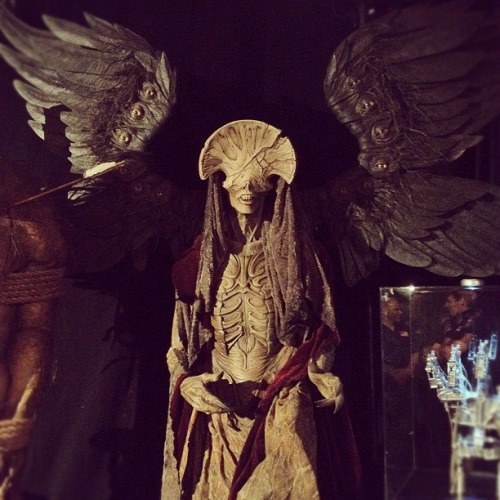
Again in Ezekiel 10…
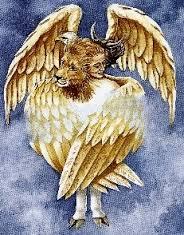
Basically, when the people writing Scripture tried to describe what they saw when they saw an angel… they run into the end of their imagination… they can never quite seem to fully explain it because they had trouble even comprehending what they saw, let alone being able to describe it to someone else.
